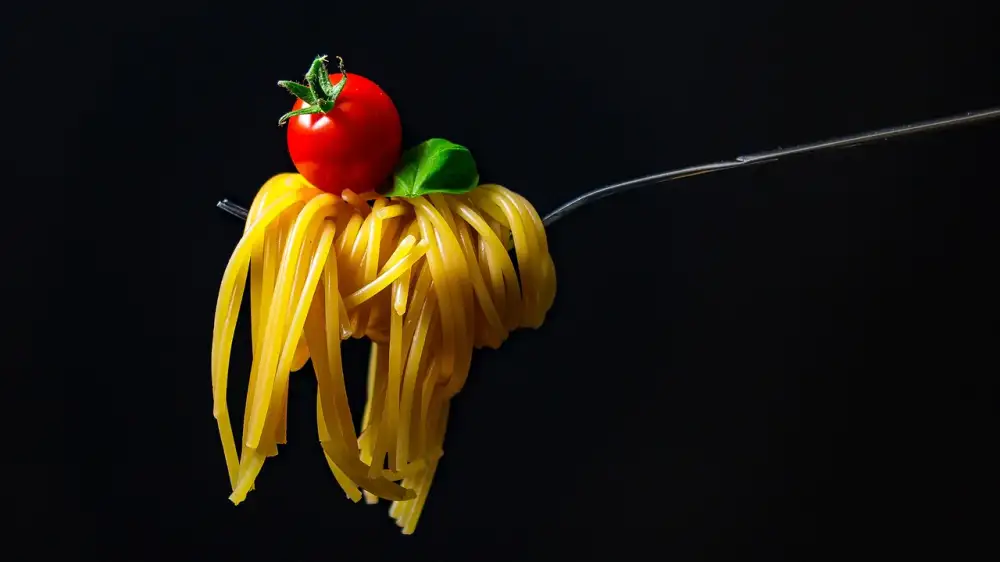Master the Art of Making Pasta: A Step-by-Step Guide to Crafting Homemade Pasta

There is something truly special about homemade pasta. The process of creating your own pasta from scratch allows you to experience the artistry and craftsmanship that goes into this beloved Italian staple. While store-bought pasta may be convenient, nothing compares to the taste and texture of freshly made noodles.
Making pasta at home is not as daunting as it may seem. With a few simple ingredients and some basic equipment, you can embark on a culinary adventure that will elevate your cooking skills and impress your family and friends.
In this step-by-step guide, we will walk you through the process of crafting homemade pasta, from gathering the necessary ingredients and equipment to cooking and serving the finished product. So put on your apron, roll up your sleeves, and get ready to master the art of making pasta in the comfort of your own kitchen.
Gathering the necessary ingredients and equipment
Gathering the necessary ingredients and equipment is the first step in mastering the art of making homemade pasta. To make pasta from scratch, you will need just a few simple ingredients: all-purpose flour, eggs, and salt. For a basic pasta recipe, you will need approximately 2 cups of flour and 3 large eggs.
In terms of equipment, you will need a mixing bowl to combine the ingredients and a fork or your hands to mix them together. Additionally, you will need a clean surface for kneading the dough, such as a countertop or cutting board. A rolling pin is essential for rolling out the dough, but if you want to take your pasta-making skills to the next level, investing in a pasta machine can be incredibly helpful.
Having these ingredients and equipment ready before starting the process will ensure that your pasta-making experience goes smoothly and efficiently. So gather everything you need and let's get started on creating delicious homemade pasta!
Preparing the pasta dough
To prepare the pasta dough, you will need just a few simple ingredients: all-purpose flour, eggs, and salt. Start by measuring out 2 cups of flour and placing it on a clean work surface. Create a well in the center of the flour and crack 3 eggs into it. Add a pinch of salt to enhance the flavor.
Using a fork, gently beat the eggs while gradually incorporating the flour from the sides. Continue mixing until a shaggy dough forms. At this point, you can use your hands to bring the dough together. Knead it for about 5 minutes until it becomes smooth and elastic.
If the dough feels too dry, add a little water; if it's too sticky, sprinkle some more flour. The goal is to achieve a soft but not sticky consistency.
Once you have kneaded the dough to perfection, shape it into a ball and wrap it tightly in plastic wrap. Allow it to rest at room temperature for at least 30 minutes or up to an hour. This resting period allows the gluten in the dough to relax, making it easier to roll out later.
Now that your pasta dough is ready, you're one step closer to enjoying delicious homemade pasta!
Kneading and resting the dough
Once you have prepared the pasta dough, the next step is to knead it. Kneading is essential as it develops the gluten in the dough, giving it elasticity and structure. To begin, lightly flour your work surface and place the dough on top.
Using the heels of your hands, push the dough away from you, folding it back over itself. Rotate the dough a quarter turn and repeat this motion. Continue kneading for about 10 minutes until the dough becomes smooth and elastic.
After kneading, it's important to let the dough rest. This allows the gluten to relax and makes it easier to roll out later. Wrap the dough tightly in plastic wrap or cover it with a clean kitchen towel and let it rest at room temperature for at least 30 minutes.
During this resting period, you can prepare your desired pasta sauce or toppings. The flavors will meld together while you wait for the dough to be ready.
Remember not to skip this step as resting is crucial for achieving tender and pliable pasta. It also ensures that your pasta will cook evenly when boiled.
So take a moment to relax while your pasta dough rests, knowing that soon you'll be enjoying a delicious homemade meal that you crafted with love and care.
Rolling out the pasta dough
Rolling out the pasta dough is a crucial step in the process of making homemade pasta. Once you have prepared and rested the dough, it's time to transform it into thin, delicate sheets. To begin, divide the dough into smaller portions for easier handling. Lightly flour your work surface and rolling pin to prevent sticking. Take one portion of dough and flatten it with your hands before rolling it out. Start from the center and roll outward, applying even pressure as you go. Rotate the dough occasionally to ensure an even thickness. If the dough starts to stick, sprinkle more flour underneath. Aim for a thin sheet that is about 1/8 inch thick or less, depending on your preference. Remember that fresh pasta cooks quickly, so thinner sheets will require less cooking time. Once you have rolled out all the dough portions, let them rest for a few minutes before cutting into desired shapes.
Cutting the pasta into desired shapes
Once you have rolled out your pasta dough to the desired thickness, it's time to cut it into the shapes you prefer. There are various options for cutting pasta, depending on the type of dish you plan to make.
For long pasta shapes like spaghetti or fettuccine, you can use a pasta machine with a cutting attachment. Simply feed the rolled-out dough through the machine and let it do the work for you. If you don't have a pasta machine, you can also use a sharp knife or a pizza cutter to hand-cut your noodles.
To create shapes like farfalle (bowties) or tortellini, you'll need to cut small squares or circles from your rolled-out dough. For squares, simply use a knife or a pastry wheel to cut even-sized pieces. For circles, you can use a round cookie cutter or even the rim of a glass.
If you're feeling adventurous, try making stuffed pasta like ravioli or tortellini. To do this, place spoonfuls of filling onto one sheet of rolled-out dough. Then, cover it with another sheet and press around each mound of filling to seal them together. Use a knife or a special ravioli cutter to cut out individual pieces.
Remember to dust your cut pasta shapes with flour to prevent them from sticking together before cooking.
Experiment with different shapes and sizes to add variety and creativity to your homemade pasta dishes. The possibilities are endless!
Cooking the pasta in boiling water
Cooking the pasta in boiling water is a crucial step in achieving the perfect texture and taste. Fill a large pot with water, adding salt to enhance the flavor of the pasta. Bring the water to a rolling boil over high heat. Once the water is boiling, carefully add the homemade pasta. Stir gently to prevent sticking and cook for about 2-3 minutes or until al dente, meaning it still has a slight bite to it. Avoid overcooking as it can result in mushy pasta. Taste-test a strand to ensure it's cooked to your preference. Once done, drain the pasta immediately and rinse with cold water to stop the cooking process. The cooked pasta is now ready to be incorporated into your favorite sauce or dish. Remember, cooking times may vary depending on the thickness of your homemade pasta, so keep an eye on it while it cooks!
Draining and serving the cooked pasta
Once the pasta is cooked to perfection, it's time to drain and serve it. Using a colander or a slotted spoon, carefully transfer the cooked pasta from the boiling water to a large bowl or serving dish. Allow any excess water to drain off before serving.
To enhance the flavors of your homemade pasta, consider tossing it with your favorite sauce or dressing while it's still warm. The porous texture of fresh pasta allows it to absorb flavors more effectively, resulting in a delicious and satisfying dish.
If you're making a pasta salad or serving the pasta as a side dish, rinse it under cold water after draining to stop the cooking process and cool it down quickly. This will help maintain its al dente texture.
When plating your homemade pasta, don't forget to garnish with fresh herbs, grated cheese, or a drizzle of olive oil for added flavor and visual appeal. Serve immediately while it's still hot and enjoy the fruits of your labor!
Remember that homemade pasta tends to cook faster than store-bought varieties, so keep an eye on it during the cooking process to avoid overcooking. With practice and experience, you'll soon master the art of perfectly cooked homemade pasta every time.
Tips and variations for homemade pasta
Tips and Variations for Homemade Pasta:
1. Experiment with different flours: While all-purpose flour is commonly used for pasta dough, you can also try using semolina flour or a combination of flours to add texture and flavor to your pasta.
2. Add flavors to the dough: Enhance the taste of your pasta by incorporating herbs, spices, or vegetable purees into the dough. For example, you can add spinach puree for green pasta or tomato paste for a vibrant red color.
3. Use flavored oils or butter: After cooking your pasta, toss it in flavored oils like garlic-infused oil or herb-infused butter to elevate the taste and aroma.
4. Try different shapes: Don't limit yourself to traditional shapes like spaghetti or fettuccine. Experiment with unique shapes like farfalle (bowties), orecchiette (little ears), or even make stuffed pasta like ravioli or tortellini.
5. Make colored pasta: To create visually appealing dishes, use natural food dyes such as beet juice, turmeric powder, or squid ink to color your pasta dough.
6. Dry homemade pasta: If you want to store your homemade pasta for later use, let it dry on a clean surface before storing in an airtight container. This will prevent it from sticking together.
7. Freeze extra batches: If you've made more pasta than you need, freeze the extra portions in individual servings for quick and convenient meals in the future.
Remember, making homemade pasta is all about experimentation and personal preference. Don't be afraid to get creative and have fun with different ingredients and techniques!
Congratulations! You have successfully mastered the art of making homemade pasta. Now it's time to sit back, relax, and enjoy the fruits of your labor. There's something truly special about indulging in a plate of pasta that you've crafted with your own hands.
Whether you choose to pair your pasta with a classic marinara sauce, a creamy Alfredo, or a simple olive oil and garlic combination, the possibilities are endless. Experiment with different flavors and ingredients to create unique and delicious dishes that will impress your family and friends.
Remember, practice makes perfect. Don't be discouraged if your first attempt doesn't turn out exactly as planned. With each batch of pasta you make, you'll gain more confidence and skill.
So go ahead, invite loved ones over for a homemade pasta feast or treat yourself to a comforting bowl of noodles on a cozy night in. Embrace the joy of creating something from scratch and savor every bite.
Homemade pasta is not only a culinary delight but also an expression of love and passion for food. So grab your apron, gather your ingredients, and let the magic begin. Enjoy!
Published: 29. 11. 2023
Category: Food



